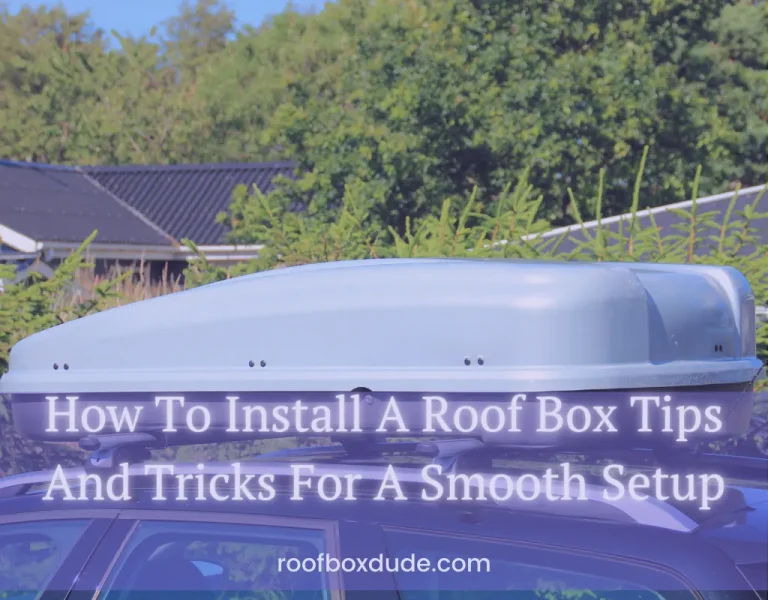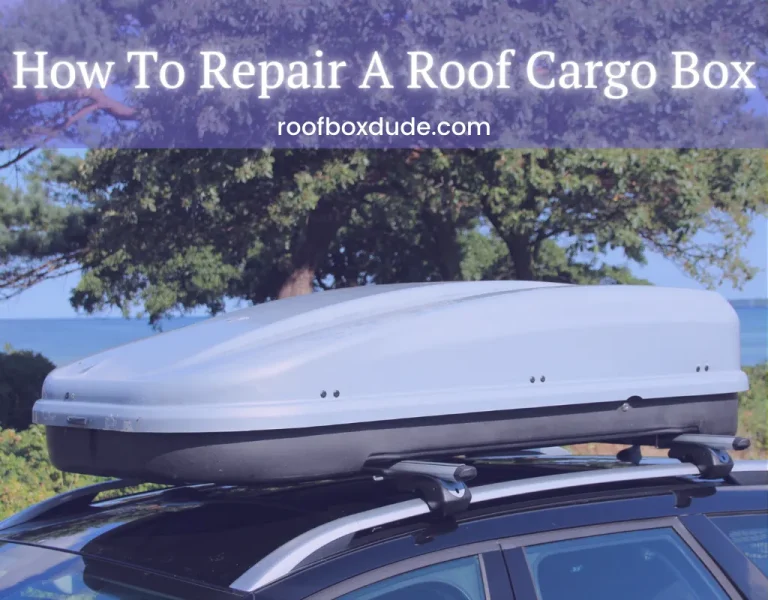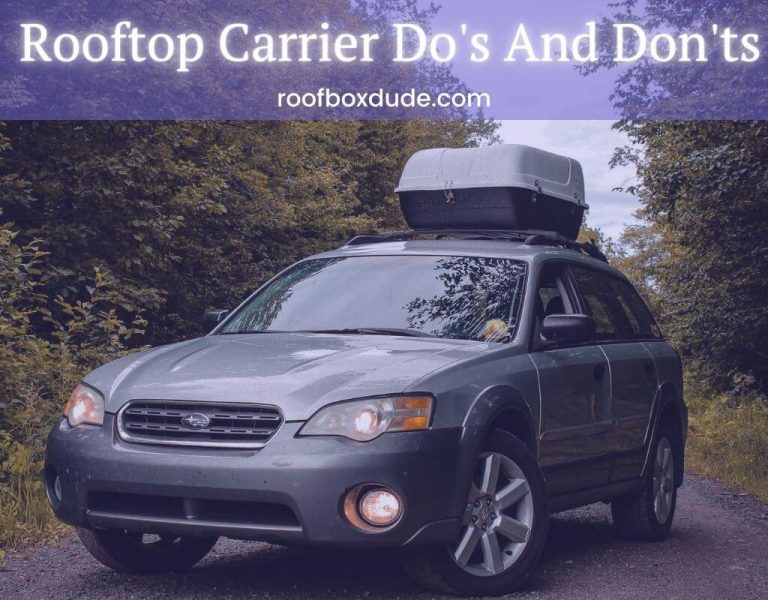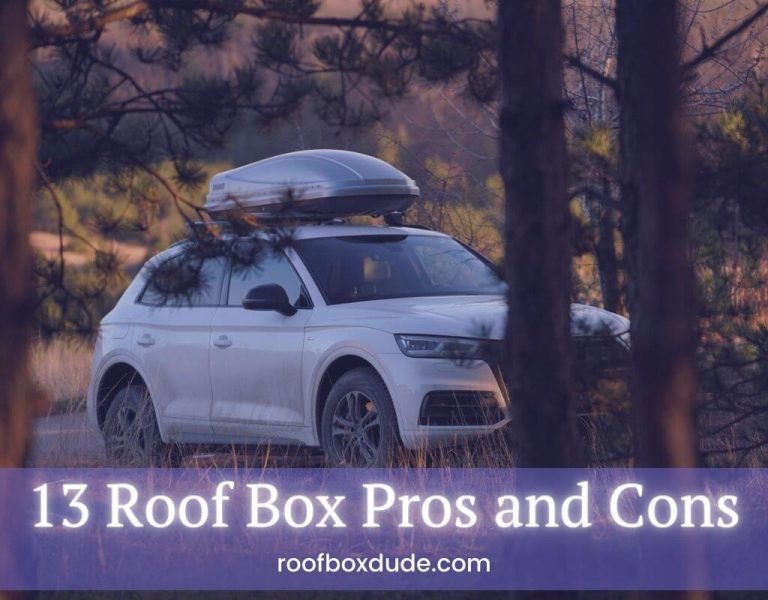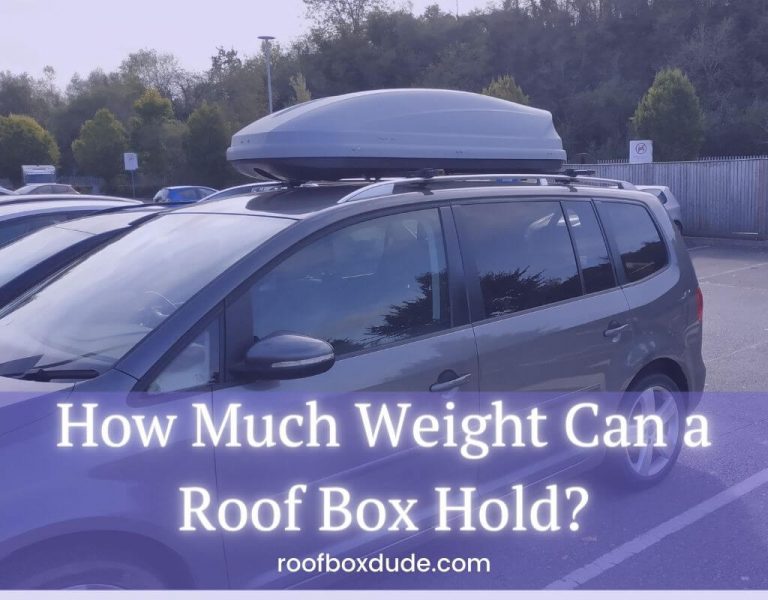How Fast Can I Drive With A Roof Box?: Roof Box Maximum Speed?
Introduction
Many roof cargo box manufacturers will include a recommendation for the maximum speed you should drive in the instructions that come with your roof box.
Boxes made by the Swedish manufacturer Thule have a maximum speed limit of 80 mph. Other manufacturers might recommend 70 mph as the limit for their particular carrier. For the majority of people, these limits are likely to be higher than the maximum speed allowed in their country or state.
Some US states include a “reasonable and prudent” condition to their speed limits. This means you should adjust your speed based on the conditions of the day. So if driving in heavy rain, fog or ice you shouldn’t be traveling at the maximum speed limit for the type of road you’re on. I suppose it could be argued that if you are driving on public roads with a fully laden roof box then you might need to trim your speed to slightly less than the posted recommended speed limit anyway.
In summary, if you follow the manufacturer’s instructions for installing the box and stick to the local speed limits then you are unlikely to encounter any problems.
How To Travel Safely With Your Roof Cargo Box
Whether you’re planning your next road trip or thinking of purchasing a roof box here are some tips on what you should do to make sure your trip goes off without a hitch.
Read The Manufacturers Instructions
Boring advice, admittedly, but important nonetheless. The manufacturer will have performed testing on their product and so should be best placed to understand if there needs to be a specific speed limit for that particular box.
Securely Attach The Cargo Box
Probably the most important step. Make sure you follow the manufacturer’s advice on securely attaching the box to your roof/roof rack. If you allow any “give” then this is likely to cause issues even more so at higher speeds.
Make Sure The Box Is Locked
Make sure the box is properly closed and locked. You don’t want to get into a situation where the box flies open as you’re driving down the highway. The last thing you want is to look in the rearview mirror to see your belongings strewn across the carriageway! It may even be worth investing in an additional strap or two to secure the lid.
Stay Within The Weight Limits For The Box
It is always important to stay within the recommended weight limits for your storage box. Overloading the box will put it under undue pressure and also increase the risks when traveling at high speeds.
Stay Within The Weight Limits For Your Vehicle
Check the manual for your vehicle and make sure you aren’t exceeding the weight limit for your roof. Don’t forget the weight limit applies to everything on the roof including the box and the rack or roof bars. It’s not just the weight of your belongings.
Load The Carrier Correctly
You should try to spread the weight evenly throughout the box and make sure items are secured so they will move around as you accelerate, brake or turn. Many manufacturers will suggest that you spread the weight 25%/50%/25% from front to back. 50% of the weight should be placed between the front and rear bars that the box is fixed to.
Check Your Tire Pressure
I’ve never owned a vehicle that didn’t recommend higher tire pressures when traveling at higher speeds or with heavier cargo. Since you are going to be doing both you should make sure your tires are at the recommended pressure. Let’s be honest this is a piece of routine maintenance that many people neglect!
Fit The Correct Size Carrier
Try to purchase an appropriately sized storage box for your vehicle. If possible try to buy the most aerodynamic box you can find and logically it will be best to avoid a box that is going to overhang your windscreen as this will have a greater effect on the overall aerodynamics of your car.
Remove Your Storage Box When Not Needed
Ideally, you should remove the storage box when you don’t actually need to use it. By leaving the box in place at all times you will be affecting your gas mileage somewhat. It may not be a huge difference but with ever-increasing fuel costs, every little bit helps.
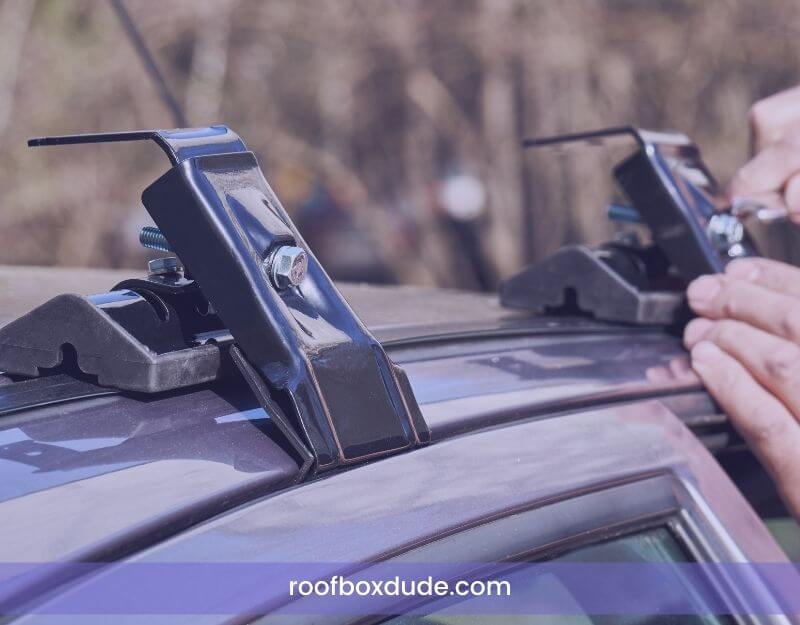
How A Roof Box Affects Your Vehicle
Fuel Economy
Aside from any safety considerations sticking to the speed limits is going to help your fuel economy considerably. Most passenger vehicles will hit a sweet spot around the 50 mph to 60 mph mark. As you increase your speed beyond 70 you will notice a greater difference in MPG. This is likely to be exacerbated by fitting a rooftop cargo box. Some studies have shown up to 35% reductions in fuel economy when using a roof box.
Handling
Particularly at higher speeds, you will likely notice changes in the way that your vehicle handles. The effects of wind particularly from the side will increase. There is a reason why high-sided vehicles can be banned from certain bridges when winds exceed a set speed!
Further Considerations
It might be worth checking out whether your car insurance/home insurance covers your storage box and its contents.
Safe Driving
Remember that the extra weight you are now carrying means your vehicle will take longer to accelerate and more importantly longer to slow down. Allow extra space between you and the vehicle in front to give yourself enough time to brake.
Rest Stops
You’re probably going to need to take regular rest stops so before setting off again double-check everything is still securely attached to your roof and give those tire pressures the once over as well.
Overloading
Hopefully, you’ve made sure not to put too much weight on the roof of your vehicle. Don’t forget that there will also be a maximum axle weight. If you have also got a trunk full of gear plus passengers then you need to think about that too.
How Fast Can I Drive With A Roof Box?: Summary
The max speed is just that, a maximum. Some people tend to see it as a minimum! If you’re traveling with a fully-loaded vehicle plus a roof box you really should be observing the local speed limits. Most likely you will have your most precious cargo with you, your family. Is the risk to them worth shaving an hour or so from your travel time? Isn’t it just more sensible to stick within the posted limit?
Thinking of buying a new cargo carrier? Check out this guide to some of the best roof boxes.
Frequently Asked Questions [FAQ]
What Speed Can You Drive With A Roof Box?
First and foremost you should be checking the speed limit for the road you are on. You should also take account of the conditions and adjust your speed accordingly. Many, if not most, boxes will be safe to use at typical highway speeds if you adhere to the manufacturer’s instructions for fitting.
What Is The Max Speed With A Thule Roof Box?
According to the Thule website, you should not exceed 130 kph (80 mph)!
Can You Drive With An Empty Car Top Carrier?
Yes, you can drive with an empty carrier. However, it is generally best to remove it if you aren’t using it. This will improve your fuel economy. It is also likely to increase the longevity of the box if it is stored away from the elements. Driving will be slightly easier, particularly in high winds.


